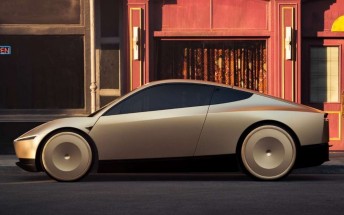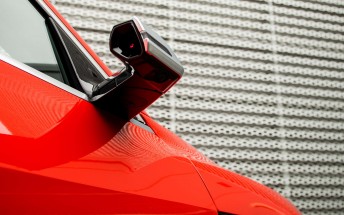Just in: Xiaomi Mi Note 2 hands-on
In a sad year for Galaxy Notes, a Mi Note could shine brighter than it otherwise would have been allowed to - the Xiaomi Mi Note 2, that is. It's easy to see the Xiaomi dual-curved flagship as a Galaxy Note7 clone, but for all the similarities, the Mi Note 2 is the natural evolution of the Xiaomi high-end lineup - Galaxies, or no Galaxies (the latter, as luck would have it).

Anyway, the Mi Note 2 is in the office, finally, and we're wasting no time and sparing no effort to put it to the test. We figured we'd just share a few thoughts on the design, while that initial 'new phone is here' hype hasn't worn off.
The comparisons to a Note7 are inevitable, we've established that. If only we hadn't promptly returned our review samples as instructed, we could have photographed the two side by side, but alas - we stood on principle on that one, as always.
The Mi Note 2 is marginally thinner than both the Note7 and the S7 edge, yet the difference feels more substantial. Perhaps it has to do with proportions - for the same screen size the Note 2 is both taller and wider than the Note7, and consequently the S7 edge. That means bezels - the Mi Note 2 definitely has a bit more of those in each direction than the Note7.
It's all about the dual-curved display on the front, though, really. It's only ever so slightly curved, with a pretty large radius too, making it appear more like a slope than an actual bend but the effect is still visible. The clever choice of default wallpaper also helps mask the fact that there's a little more phone after the display ends - the Galaxy Note7 was a lot more impressive in terms of side bezels, and so is the S7 edge.

Xiaomi, it seems, can't make up its mind about the navigation buttons/fingerprint sensor implementation - the Mi 5 has a proper clickable home button (questionably-sized, but that's a different matter) with a fingerprint sensor embedded, the 5s replaces it with a slightly recessed (but not clickable) fingerprint sensor/capacitive home key, while the 5s Plus adopts the other concept with capacitive navigation keys under the display and a fingerprint sensor on the back.
Which brings us to the Mi Note 2 and its mechanical home button/fingerprint reader - sort of like the Mi 5, only more generously sized. But don't think that's because of some Mi Note traditions, no - the original Mi Note (and the slightly different Mi Note Pro) had a row of capacitive keys up front and skipped on fingerprint recognition - you could go away with that two years ago. We're inclined to suspect a deliberate attempt to make one Note look a little more like the other.

The Xiaomi Mi Note 2 is glass on both sides, unlike the ceramic-backed Mi Mix. That would make it a little more prone to scratches, but also hopefully a tiny bit less of a shatter hazard. Hard to put a number on the latter, though. The smudges are inevitable either way.
What the Mi Note 2 does better than the Note7, is keeping the primary camera inside the body. It still sticks out a tiny bit, but it's almost as if Xiaomi decided to make it that way, instead of being forced to.

We don't mind camera bumps that much anyway - it's more of a design deficiency than anything else. But we do value image quality, speed, and ease of use when it comes to smartphone cameras - and these are all things that we will be looking into in the Xiaomi Mi Note 2 review. Of course, the usual full set of tests is due as well - stay tuned.
Special thanks to eudirect.shop for providing the review unit.
Reader comments
- mO
- 05 Dec 2016
- Mqr
You do realise Samsung sells them these panels right?
- Mo
- 05 Dec 2016
- Mqr
Y
- Anonymous
- 03 Dec 2016
- gy@
Nope, it is not Samsung's AMOLED that Xiaomi uses here, it is LG's. And for Redmi Pro it was far worse Chinese Amoled that have burn in ina many cases,after just 2-3 months of using it.




 Xiaomi
Xiaomi Samsung
Samsung Samsung
Samsung Nothing
Nothing OnePlus
OnePlus


